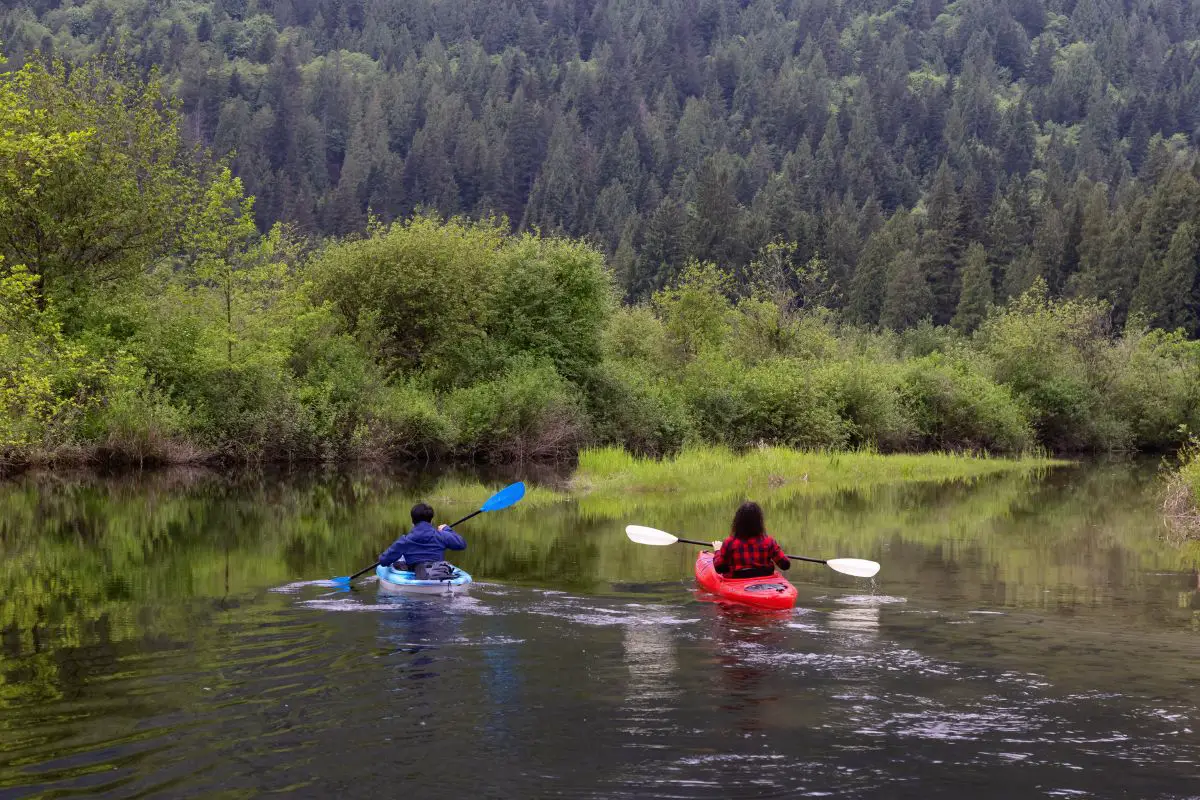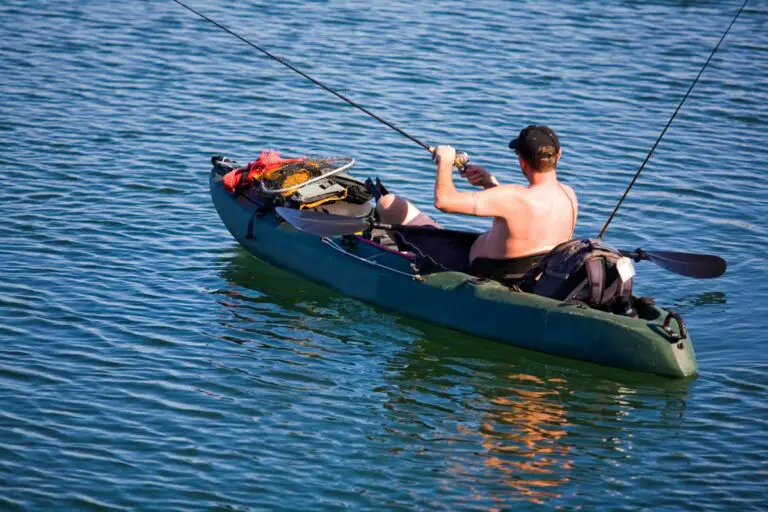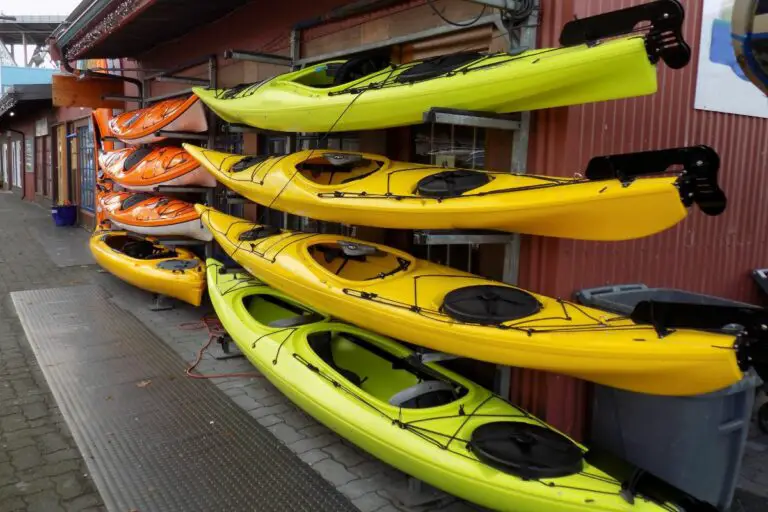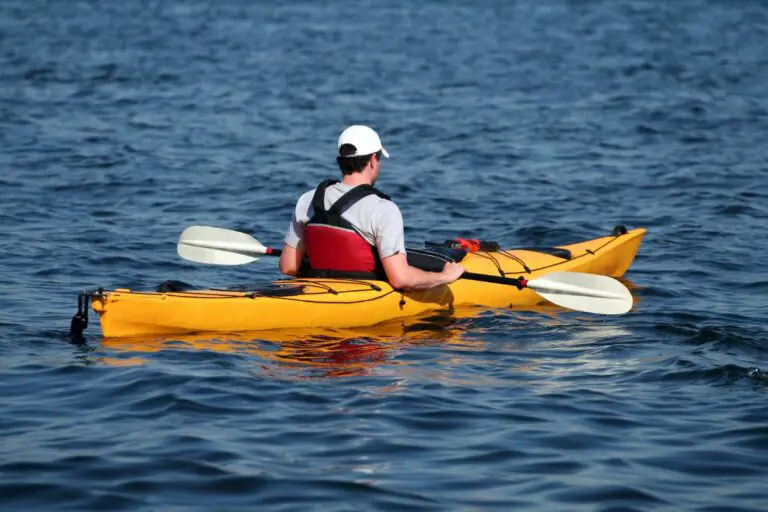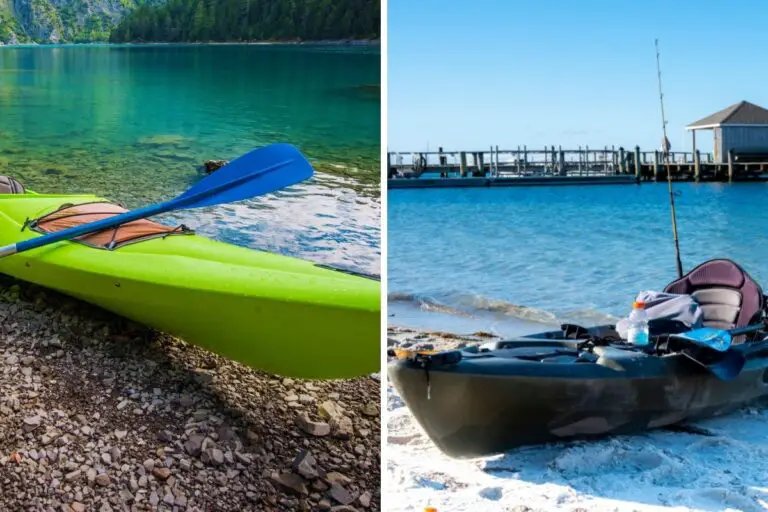Is Kayaking on A Lake Dangerous? 10 Safety Tips You Must Know
Kayaking allows you to explore the natural beauty of lakes and other bodies of water in a way that nothing else really does.
While kayaking can be a fun and exciting way to enjoy the outdoors, some safety concerns can arise when it comes to kayaking in different bodies of water.
So, is kayaking on a lake dangerous? Or is it safer than kayaking in a river or the ocean?
Kayaking on a lake can be dangerous without proper safety measures. To kayak safely on a lake, you must always wear your safety gear, learn proper paddling techniques, check the weather and water conditions beforehand, familiarize yourself with the lake, and stay within designated areas.
Keep reading to learn more about the dangers of kayaking on lakes and what you can do to stay safe.
Table of Contents
Can You Kayak on A Lake?
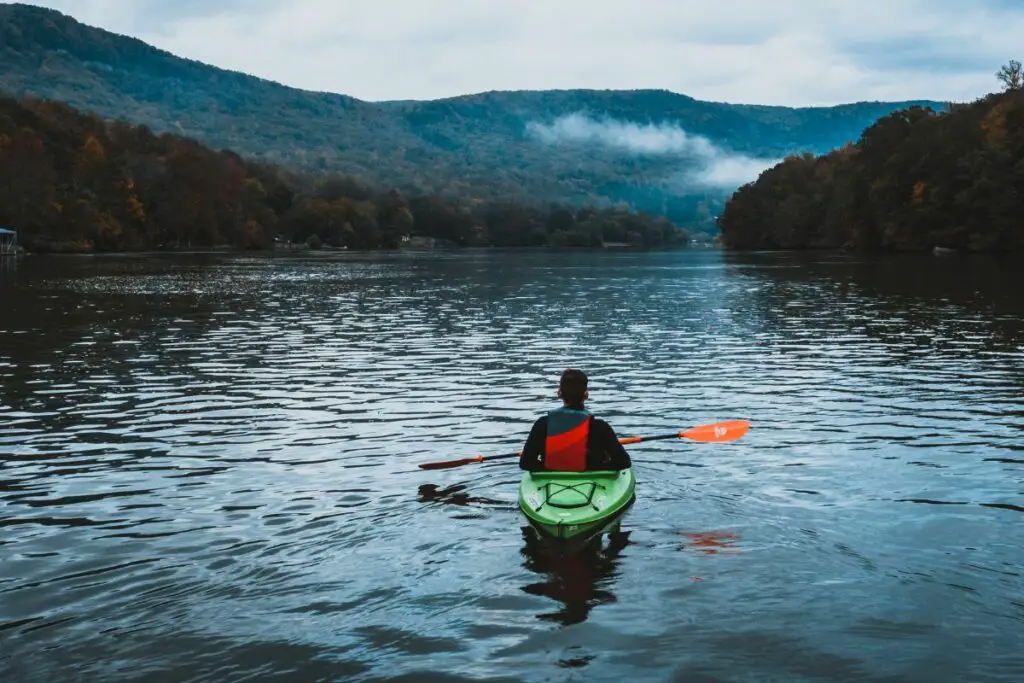
You can kayak on a lake. However, there may be laws or regulations for kayaking on lakes, depending on your location, so it’s essential to check with local authorities before heading out on your trip.
Generally, lakes are a popular destination among kayakers, and they can be a safer option for beginners than other bodies of water due to their typically calmer waters.
Some of the best lakes for kayaking in the United States include Lake Tahoe, Lake Michigan, Lake Powell, Lake Champlain, Lake Superior, and Lake George. These lakes offer scenic views and opportunities for both recreational and adventurous kayaking.
How Is Lake Kayaking Different from River or Ocean Kayaking?
Lake kayaking often differs from river or ocean kayaking in terms of water conditions and environment.
For instance, lakes generally have calmer and more predictable waters compared to rivers or oceans, which may have stronger currents, waves, and high tides. This offers more opportunities for recreational activities, such as fishing or exploring shoreline areas.
Lake kayaking may also require different gear or skills compared to river or ocean kayaking.
In terms of gear, lake kayakers may need to consider factors such as sun protection, hydration, and insect repellent, which may not be as important for river or ocean kayakers.
As for skills, lake kayakers may need to focus more on navigation, as lakes will not have strong currents to follow or landmarks to guide the way. Additionally, they need to be aware of boat traffic and follow boating safety rules.
Ultimately, it’s important to take precautions and adjust your kayaking technique accordingly when transitioning from one type of water body to another.
What Kind of Kayak Is Best for Lakes?
For kayaking on lakes, it is generally recommended to use a recreational kayak.
This type of kayak is designed with a wider, flatter hull, which allows for greater stability and easier tracking in calm waters. It’s also comfortable and easy to use, making it a great option for beginners or anyone looking for a leisurely kayaking experience.
My top recommendation for a recreational kayak that’s ideal for lakes is the Pelican Sentinel 100X, with its EXO-Shell construction providing increased durability and its multi-chine flat bottom hull ensuring stability and maneuverability on calm waters.
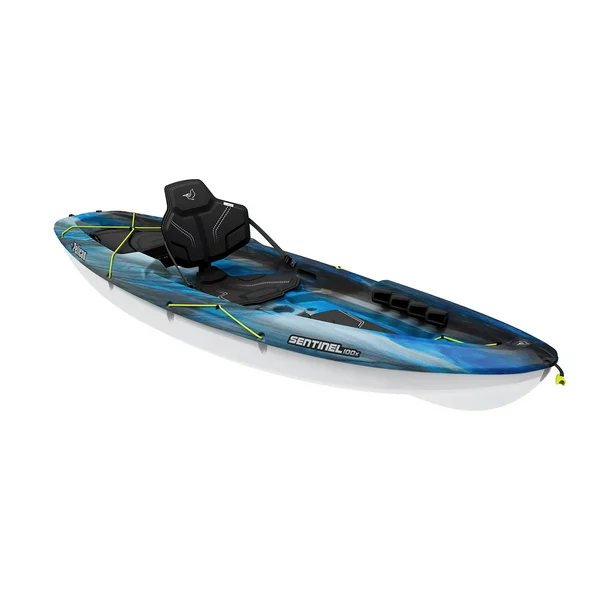
It also features a spacious cockpit with easy-access storage, making storing gear and accessories convenient for your lake kayaking adventure.
Is Kayaking on A Lake Dangerous?
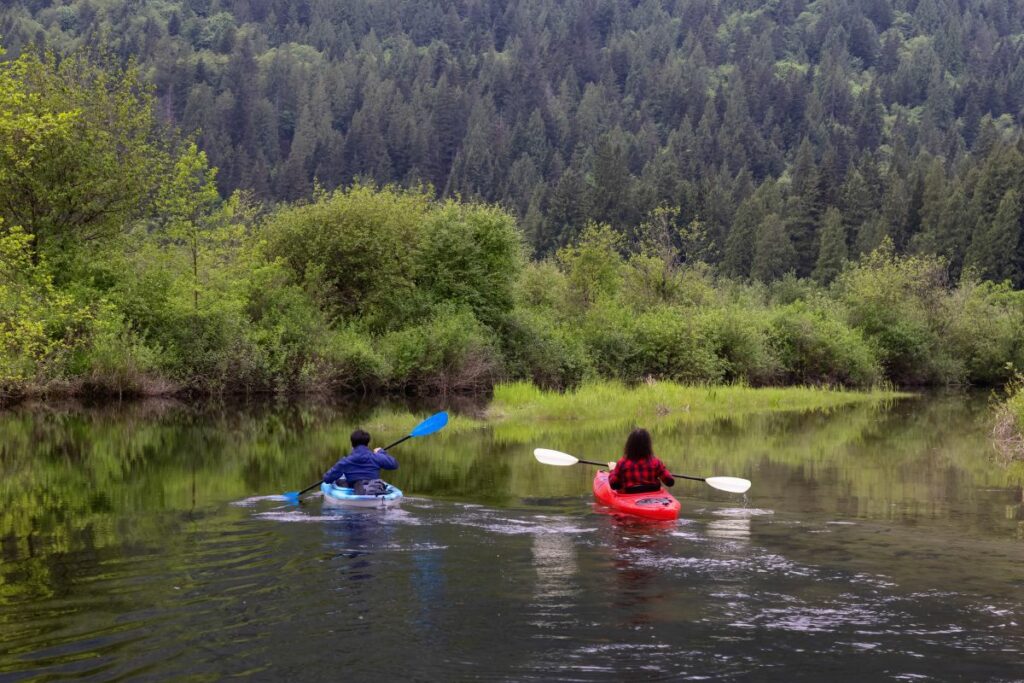
While lakes generally have calmer waters compared to rivers or oceans, it can still be dangerous to kayak on a lake, especially if proper safety measures are not taken.
So, it’s important to know the potential dangers of kayaking on lakes and how to avoid them to make your experience safer and more enjoyable.
The Dangers of Kayaking on Lakes
Here are some of the most common dangers of kayaking on lakes:
- Weather conditions: Sudden changes in weather conditions, such as high winds or thunderstorms, can make kayaking on lakes dangerous. These conditions can cause waves, swells, and sudden changes in water depth, which can capsize a kayak or make it difficult to navigate.
- Boat traffic: Lakes are often popular for recreational boating, which can increase the risk of collisions or capsize due to the waves created by passing boats.
- Water temperature: Even on a hot day, the water in a lake can be much colder than the air temperature, which can increase the risk of hypothermia if a kayaker falls into the water.
- Lack of experience: Kayaking on a lake may seem simple, but it still requires a certain level of skill and experience. Beginner kayakers may struggle with navigation, balance, or keeping up with the pace of the water.
- Obstacles and Hazards: Lakes may have submerged rocks, tree stumps, or other hazards that can damage a kayak or cause injury to a kayaker.
Tips to Stay Safe When Kayaking on a Lake
Here are some tips to stay safe when kayaking on a lake:
- Always wear a personal flotation device (PFD): A PFD can help keep you afloat in case of an accident or if you fall into the water.
- You also need to make sure that your PFD is undamaged, properly fitted, and comfortable to wear for extended periods.
- Bring essential gear: Make sure to bring navigation devices, such as a compass or a GPS, signaling devices, such as a whistle or flares, and a first-aid kit. Also, bring extra water and food, sunscreen, and insect repellent.
- Wear appropriate clothing: It’s recommended to wear quick-drying clothing and to bring an extra change of clothing in case you get wet. It’s also recommended to wear water shoes or sandals with good grip to protect your feet and provide traction on wet surfaces.
- Check weather conditions: Before heading out, check the weather forecast and wind conditions in your area, and avoid kayaking during strong winds, thunderstorms, or other severe weather conditions.
- Be aware of boat traffic: Keep an eye out for other boats and be aware of their wakes. Avoid paddling near boat channels or marinas, and try to stay in kayak-designated areas.
- Improve your kayaking technique: Learn and practice proper kayaking techniques, including how to paddle, turn, and stop. Also, try to maintain a good posture, stay centered in the kayak, and avoid sudden movements that may cause the kayak to tip over.
- Know your limits: Choose a lake and a route that you’re familiar with and that matches your skill level and experience. Don’t attempt to take risks or exceed your capabilities.
- Avoid alcohol and drugs: Never kayak on a lake under the influence of alcohol or drugs, as it impairs your judgment and coordination.
- Follow the rules and regulations: Follow any rules or regulations for kayaking on the lake, including staying within designated areas and avoiding private property.
- Bring a Kayaking Buddy: Kayak with a friend or a group to increase safety and have someone to help you in case of an emergency.
By following these tips and staying aware of potential dangers, you can minimize the risks and enjoy a safe kayaking experience on a lake.
Kayak your way to Freedom
- On a budget? Check out the best fishing kayaks under $500 here and the best Fishing Kayaks under $1,000 here. Or Check the best Cheap Kayaks here.
- Going fishing? Here are the best Ocean fishing kayaks, and here are the best River Fishing Kayaks.
- You can also find the best Fly Fishing Kayaks here and the best Bass Fishing Boats here.
- A bit experienced? Check out the best modular kayaks here and the best tandem fishing kayaks here.
- Looking for something special? Check out my favorite Ducky kayaks here.
- Navigate your way with these awesome and beginner-friendly Kayak compasses.
- Going Hunting? These Duck hunting kayaks will give you an unfair advantage!
- Have a need for speed? These motorized kayaks will get you moving.
- Protect yourself from the sun with these Kayak shades, and make your kayak more comfortable with these Kayak seats.
- Keep your feet dry and warm with these superb Kayaking shoes.
- Going Kayaking in cold water? Stay warm with these Kayaking gloves.
- Paddle Less, Fish More with the Best Kayak Motors
- Looking to get a trolling motor on your kayak? Check out the best kayak trolling motor mounts here.
If you like this article, please share it or pin it, you can find the share buttons below. We will really appreciate it ❤️

